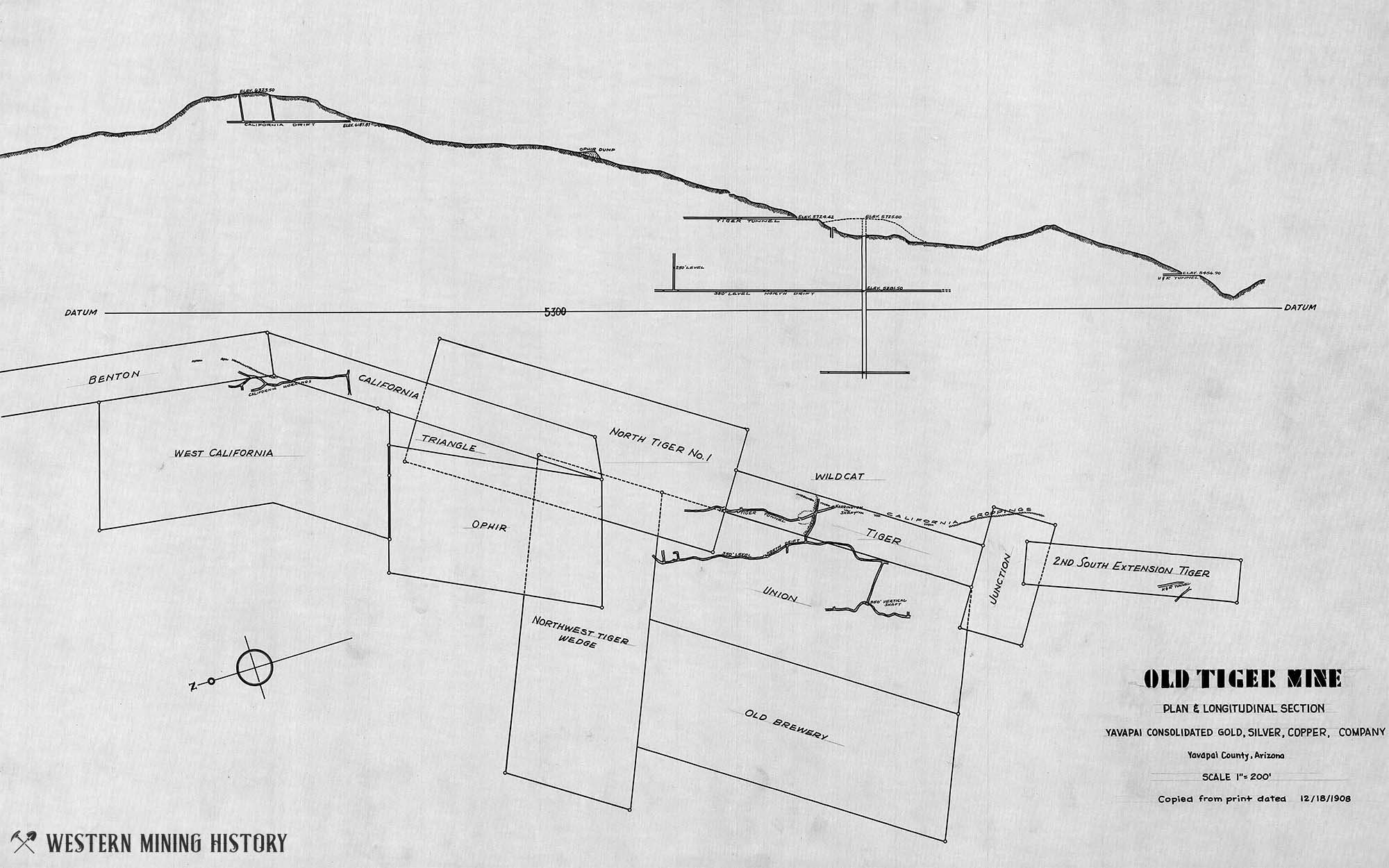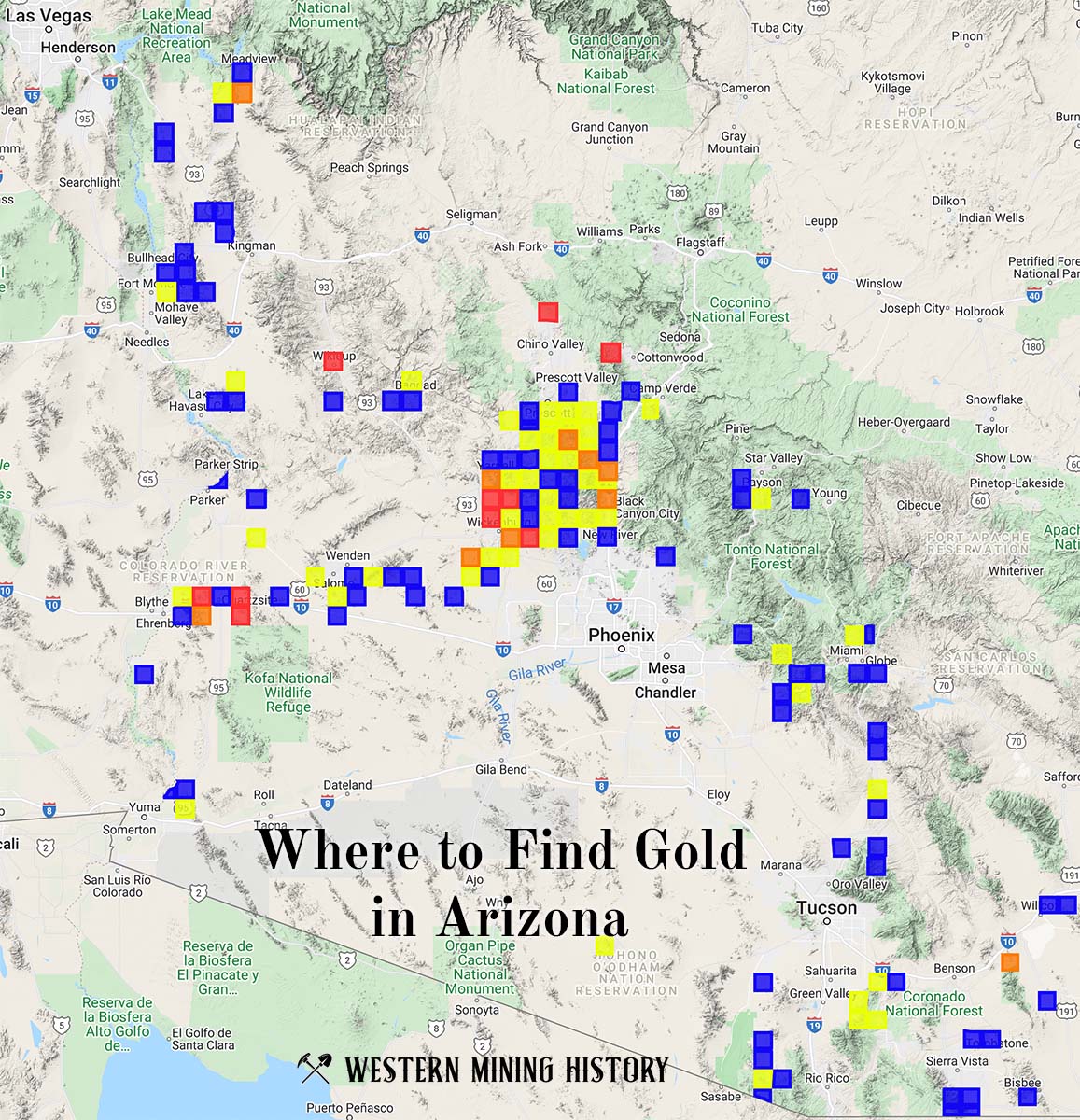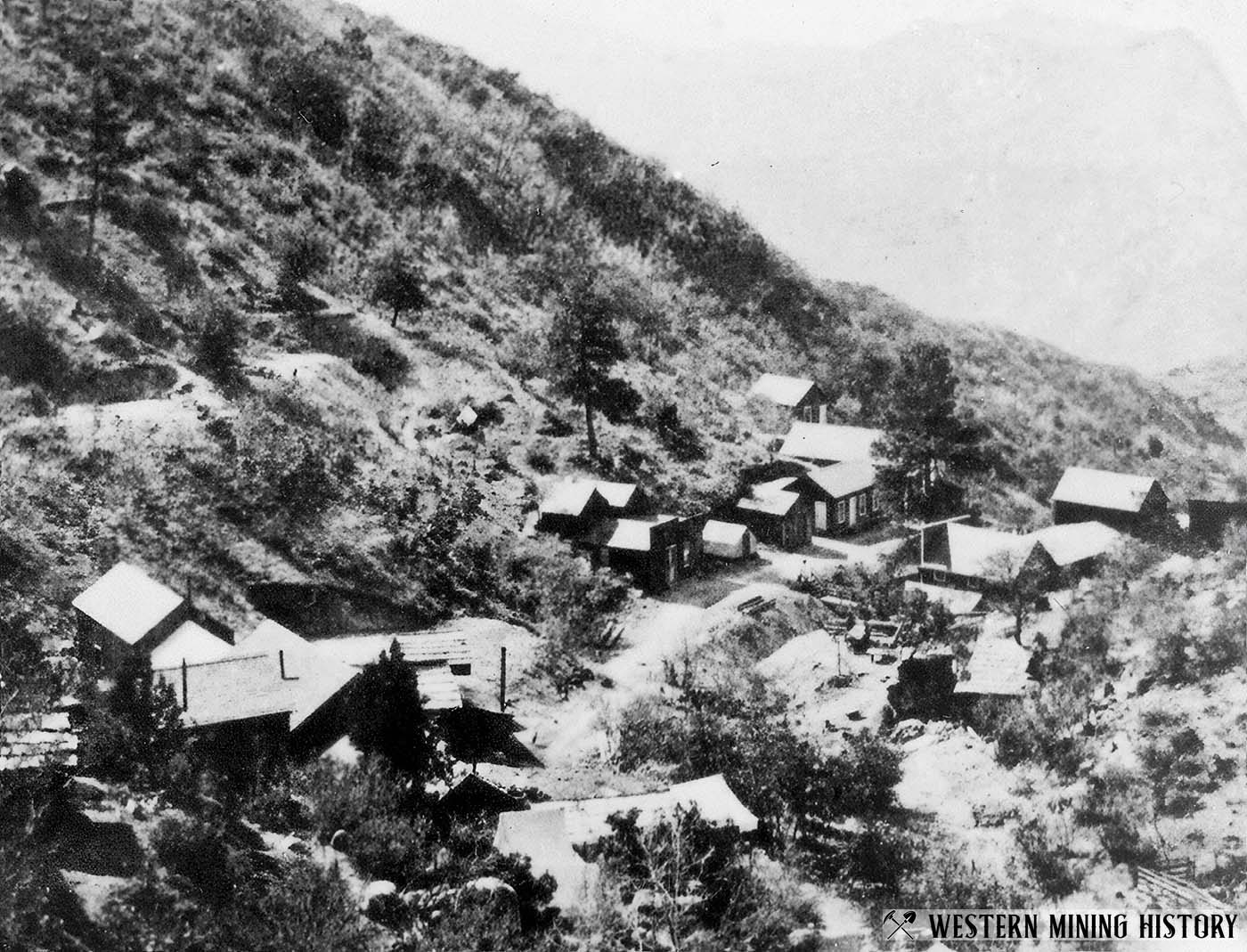Bradshaw City History
Many modern accounts of Bradshaw City are wildly inaccurate, largely due to a misinterpretation of a Forest Service historical marker at the site. The marker states that the town was named after William D. Bradshaw, “who discovered minerals in the surrounding mountains about 1863.” This has led some writers to mistakenly claim that Bradshaw founded the town around that time.
In reality, Bradshaw City was established in 1871—named in his honor, but not founded by him. The sign also asserts that “at the peak of mining activities, 5,000 people lived here,” though this figure more likely refers to the entire mining district; Bradshaw City itself had closer to 1,000 residents at its peak.
Bradshaw City was founded in early 1871 near the Tiger mine, a rich producer of silver. The town boomed for nearly two years but the “Panic of 1873” resulted in the decline of silver prices and the boom at Bradshaw city ended. The town managed to survive for another decade but was abandoned by the mid-1880s.

The April 29, 1871 edition of the Arizona Weekly Citizen reported:
Capt. Hargrave. pronounces the Tiger the largest and richest ledge he has ever seen, and says there are a dozen other mines nearly as good. “Bradshaw City" had been surveyed, and houses were being erected on sundry lots.
The January 7, 1904 edition of Leslie's Weekly described the difficulty of transporting the rich silver ore from this remote location during the early history of the Tiger mine:
The Tiger mine has produced, according to the most authentic records, $2,500,000. The silver ore was intensely rich, most of that which was mined containing a thousand ounces of silver to the ton, worth in those days from $1,000 to $1,200. And the ore was sold in far-away San Francisco after a long journey by a remarkably circuitous route. The mine's product was packed on burros and carried over the difficult mountain trails-the distance is 150 miles in a straight line, but much farther by the constantly winding trail-to the Colorado River.
There the ore was loaded on barges and taken by the current down to the Gulf of California. Here it was transferred to sailing vessels which carried it down the whole length of the Gulf, around the point of the peninsula of California, and thence northward along the Pacific coast to San Francisco, where it was sold. Only the richest ore was worth while under this great expense.
The July 15, 1871 edition of the Weekly Journal-Miner stated that Bradshaw city had its own dairy, and reported on the first sermon in the town:
Parson Groves preached, Sunday last, at Bradshaw City, to a congregation of about one hundred intelligent miners and prospectors, which sermon, we feel sure, was the first ever delivered by a Christian minister on Mount Bradshaw.
Postal records indicate that a post office wasn’t established here until 1874, which was two years after the town’s peak in 1872.
Although Bradshaw City had already declined significantly by 1877, the state legislature appropriated $35,000 to build a road from Prescott to Bradshaw City. Mining still supported the town at varying levels, but by 1884 it was largely abandoned and the post office closed.
The Aug 9, 1896 edition of The Arizona Republic wrote:
The famous Old Tiger mine which is situated near the Luke claims in Yavapal county, was in early days the center of one of the liveliest camps In Arizona. About a quarter of a mile above the mine was a little city called Bradshaw City, which was a very prosperous place with a population of 1,000 souls. Today not a soul remains and the old houses have either crumbled to ruins or have been removed.

The Tiger mine outlasted the town by many years. Once the rich silver deposits near the surface were exhausted, the metal content of the ore transitioned to gold and copper. Production at the mine lasted well into the 1900s.
Arizona Mining Photos

View over 35 historic Arizona mining scenes at A Collection of Arizona Mining Photos.
Arizona Gold

"Where to Find Gold in Arizona" looks at the density of modern placer mining claims along with historical gold mining locations and mining district descriptions to determine areas of high gold discovery potential in Arizona. Read more: Where to Find Gold in Arizona.
